Sewing knife pleats is a skill that can elevate your garment-making prowess, infusing your creations with timeless elegance and structure. These narrow, neat folds are commonly found in skirts, kilts, and uniforms, imparting a polished and tailored look.
While the art of sewing knife pleats may appear intricate, it’s a technique well worth mastering. In this concise guide, we’ll walk you through the step-by-step process, ensuring that you grasp the fundamentals required to create flawless knife pleats.
With some basic materials and a willingness to practice, you’ll soon be able to sew these pleats with confidence, enhancing your sewing repertoire and the sophistication of your garments.
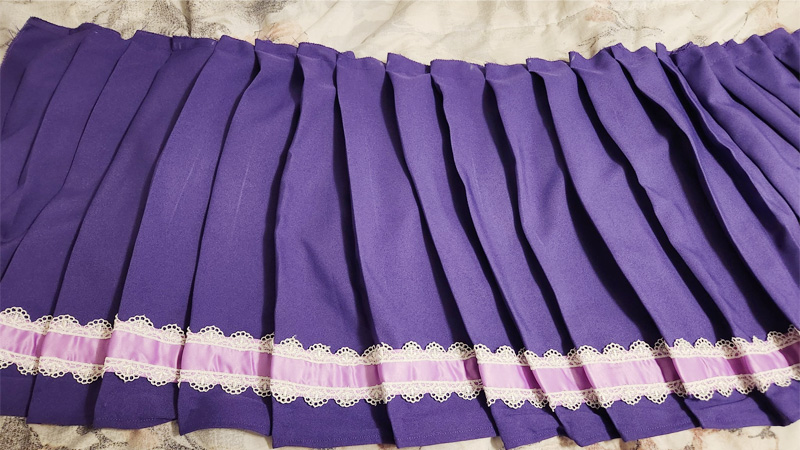
What Are Knife Pleats?
Knife pleats are a type of narrow, flat fold-in fabric that adds structure and style to garments. These pleats are created by folding the fabric back and forth in a uniform, overlapping manner, resulting in a series of closely spaced, parallel folds.
Unlike some other pleat styles, knife pleats all face in the same direction and lie flat against the fabric, creating a streamlined and tailored look.
Commonly found in skirts, kilts, and uniforms, knife pleats are a timeless design element that adds a touch of sophistication and precision to clothing.
9 Steps to Sew Knife Pleats
Sewing knife pleats is a classic technique that adds a touch of elegance and structure to various garments, especially skirts, kilts, and school uniforms. Knife pleats are narrow, folded pleats that lie flat in one direction.
Learning how to sew knife pleats may seem daunting at first, but with practice and patience, you can achieve professional-looking results.
Here’s a step-by-step guide to help you get started:
Materials You’ll Need:
- Fabric
- Measuring tape
- Fabric marker or chalk
- Pins
- Iron and ironing board
- Sewing machine
- Thread
- Scissors
Step-by-Step Instructions:
1. Select Your Fabric
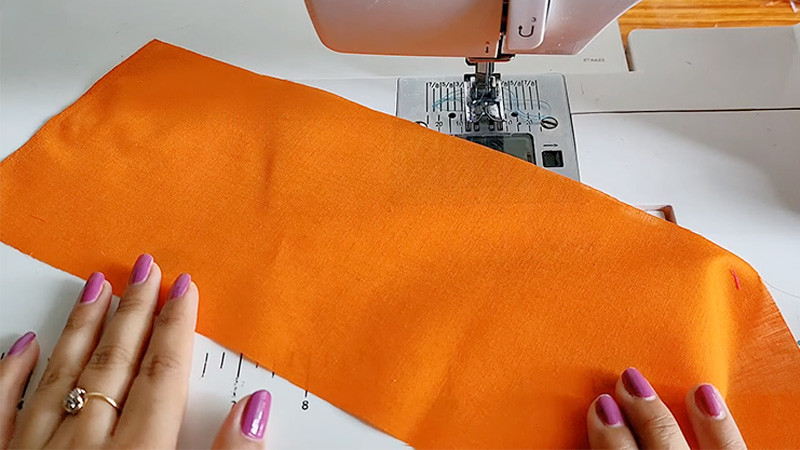
Choose a fabric that suits the style and purpose of your project. Ensure it’s clean, well-pressed, and free from wrinkles or creases, as these imperfections can affect the quality of your pleats.
2. Determine Pleat Depth
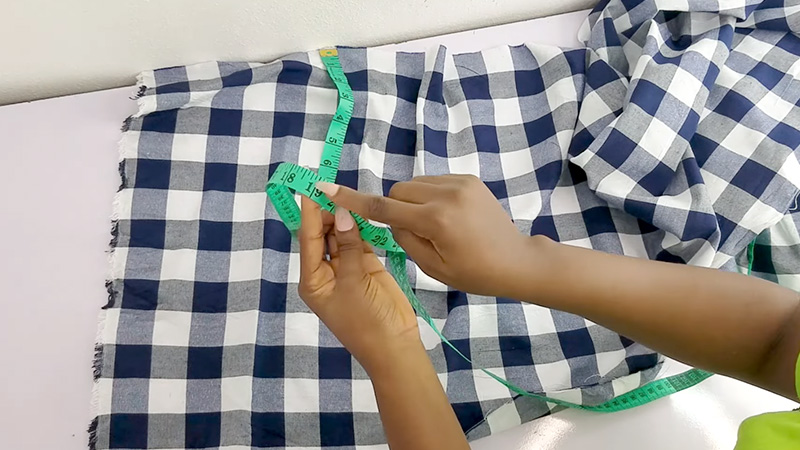
Use a measuring tape to decide the desired depth of your pleats. For precise results, mark this depth along the top edge of your fabric using a fabric marker or chalk. This will serve as your reference line when folding the fabric.
3. Calculate Pleat Spacing
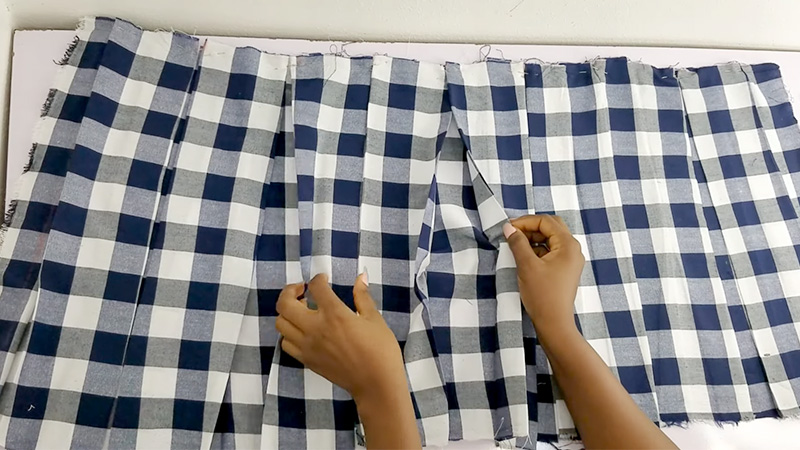
To maintain even spacing between pleats, decide on the distance between each one. A standard practice is to make the spacing twice the pleat depth. For example, if your pleat depth is 1 inch, mark intervals at every 2 inches along the fabric edge.
4. Fold the First Pleat
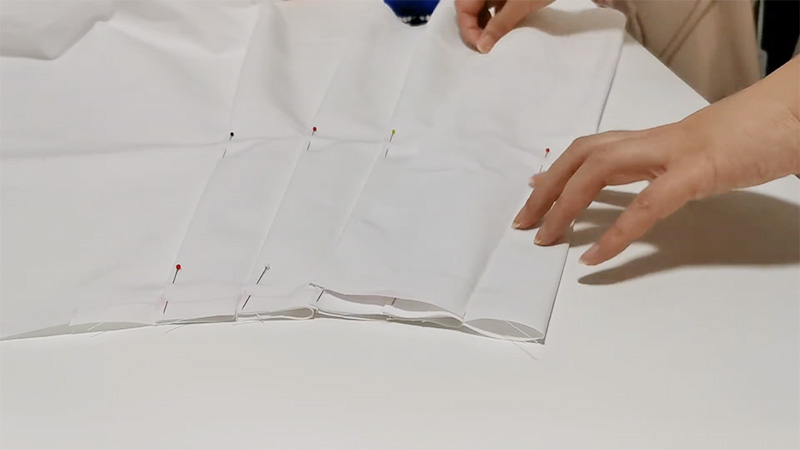
Fold the fabric along the first pleat line that you marked, bringing it to meet the pleat depth line. It’s essential to fold it evenly and precisely.
Ensure that the fold is straight and aligns perfectly with the pleat depth mark. Use pins to secure the pleat in place at the top and bottom to prevent it from shifting.
5. Repeat for Remaining Pleats
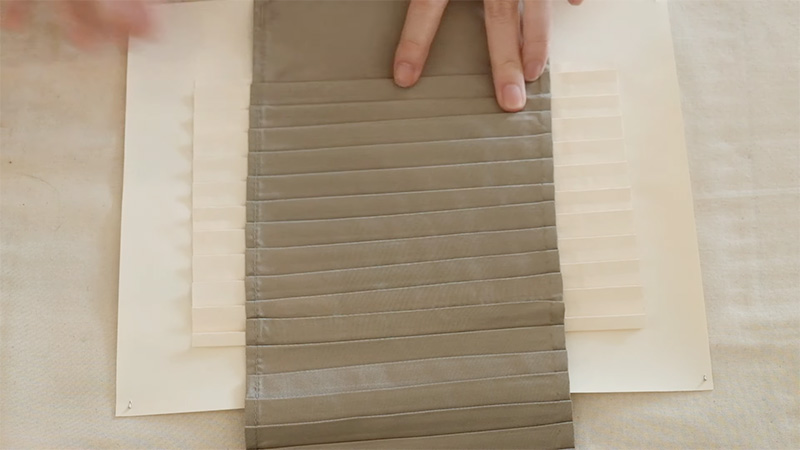
Continue folding and pinning the fabric at each marked interval, creating subsequent pleats. Pay careful attention to the alignment of each pleat and make sure they are consistent in size and spacing.
You can use a ruler or straight edge to help create precise folds. Press the pleats with a hot iron to set them in place, making them look neat and crisp.
6. Stitch Along the Top
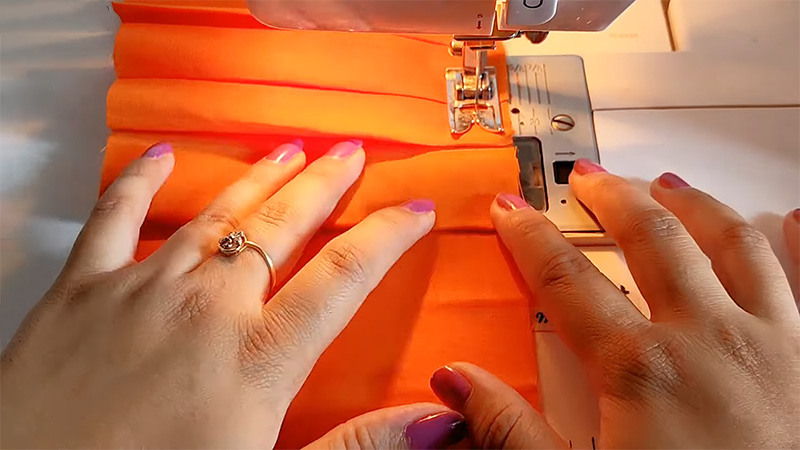
To secure the pleats in place, sew along the top edge of the pleated section, near the folded edge. Use a straight stitch or a stitch appropriate for your fabric type.
Start by backstitching a few stitches at the beginning to lock the thread, then sew along the entire pleated section, and finish with backstitching at the end to secure the pleats. Ensure that your stitches are straight and even.
7. Finish the Bottom Edge
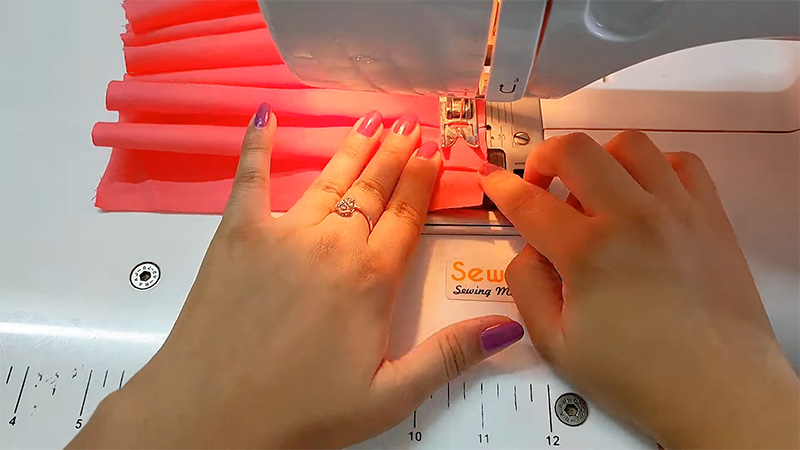
Depending on your project, you may need to hem or finish the bottom edge of your pleated fabric. This involves folding the raw edge under and stitching it in place. The type of finish will depend on your project’s requirements and your personal preference.
8. Press the Pleats
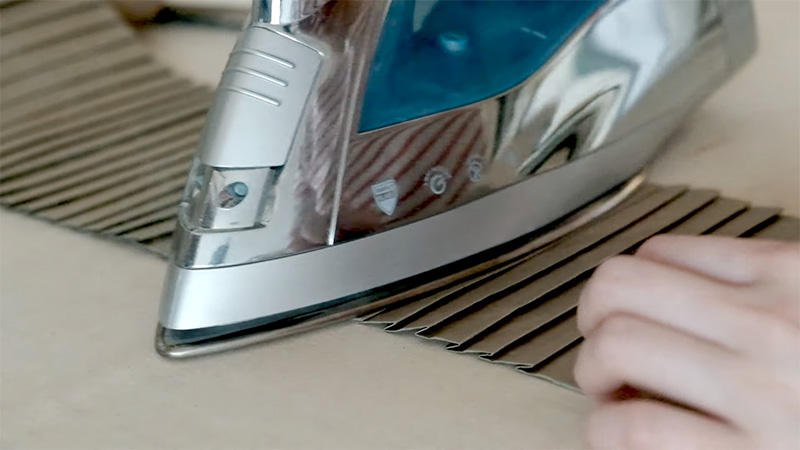
After sewing, press the pleats once more with an iron. This step is crucial for achieving well-defined, crisp knife pleats. Use steam if appropriate for your fabric, as it can help set the pleats even more effectively.
9. Optional: Baste the Pleats
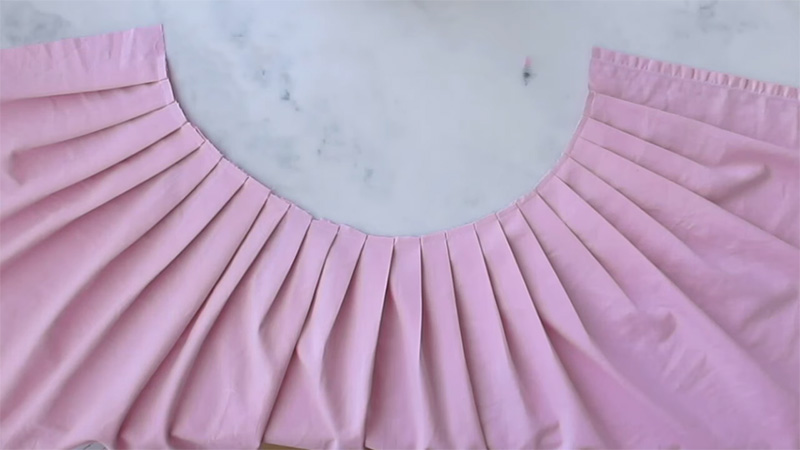
When working on a project where maintaining pleats over a long distance is essential, consider basting the pleats in place before sewing them permanently.
Basting involves using a long, temporary stitch to hold the pleats together, which you can remove later. This ensures that the pleats stay even and aligned throughout the sewing process.
How to Calculate the Size of Sew Knife Pleats?
Calculating the size to sew knife pleats involves determining the pleat depth, pleat spacing, and total fabric width needed for your project.
Here’s a step-by-step guide on how to calculate these measurements:
Determine the Finished Width
Start by measuring the waist or the area where you want to attach the pleated fabric. This measurement will serve as your finished width.
Decide on Pleat Depth
Choose the desired pleat depth for your project. Pleat depth is how much fabric is folded over to create each pleat. Common pleat depths range from 1/2 inch (1.27 cm) to 1 inch (2.54 cm) or more, depending on your preference.
Calculate Pleat Spacing
The pleat spacing is the distance between each pleat, including the pleat itself. A standard practice is to make the spacing twice the pleat depth. For example, if your pleat depth is 1 inch, your pleat spacing will be 2 inches.
Calculate the Number of Pleats
Divide the finished width by the pleat spacing to determine the number of pleats needed. For example, if your finished width is 20 inches and the pleat spacing is 2 inches, you’ll need 10 pleats.
Calculate the Total Pleated Fabric Width
To find the total width of fabric you need for your pleated panel, multiply the number of pleats by the pleat depth.
Using the example above, with 10 pleats and a 1-inch pleat depth, you’ll need a total pleated width of 10 inches (10 pleats x 1 inch each).
Add Seam Allowances
Remember to add seam allowances to both sides of your pleated panel for sewing. The amount of seam allowance will depend on your project but is typically 1/2 inch (1.27 cm) to 1 inch (2.54 cm) on each side.
Calculate the Total Fabric Width
To find the total fabric width you need to cut, add the total pleated width and the seam allowances to the finished width.
Using the previous example, if your pleated width is 10 inches and you have 1-inch seam allowances on each side, you’d need to cut a fabric piece that’s 12 inches wide (10 inches pleated width + 1-inch seam allowance on each side).
Cut the Fabric
Using your calculated total fabric width, cut your fabric piece. Ensure it’s cut straight and aligned with the fabric grain for best results.
Uses of Knife Pleats
Knife pleats, known for their elegant and structured appearance, are used in various sewing and fashion applications to enhance the look and functionality of garments.
Here are some common uses of knife pleats:
Skirts
Knife pleats are often used in skirts to create a tailored, flared, or A-line silhouette. They can add volume and movement to the garment, making it a popular choice for both casual and formal skirts.
Kilts
Traditional Scottish kilts are characterized by their knife pleats. These pleats not only provide a classic appearance but also allow for ease of movement and comfort.
Uniforms
Knife pleats are a common feature in school uniforms, military uniforms, and various professional attire. They add a neat and disciplined appearance while allowing for mobility.
Dresses
Designers use knife pleats in dresses to create visually appealing details. Pleated bodices, sleeves, or skirt sections can add a touch of sophistication to a dress.
Pants
While less common than in skirts and dresses, knife pleats can be used in the waistband or front of tailored pants to add room and comfort without compromising a polished look.
Capes and Cloaks
Knife pleats are occasionally incorporated into the design of capes and cloaks, adding volume and structure while maintaining a regal appearance.
Home Decor
Knife pleats can be used in home decor items such as curtains and drapes. They provide a clean and tailored look while allowing for precise control of the fabric’s fullness.
Costumes
Whether for historical reenactments or theatrical productions, knife pleats are often used in costume design to create period-specific garments with an authentic appearance.
Children’s Clothing
Knife pleats are frequently featured in children’s clothing, such as school uniforms, dresses, and skirts, as they add a smart and tidy look.
Accessories
Designers sometimes incorporate knife pleats into accessories like scarves, ascots, and collars to give them a unique and fashionable twist.
Home Sewing Projects
Hobbyist sewers may use knife pleats in various DIY projects, such as crafting custom aprons, tote bags, or decorative pillow covers.
Fashion Statements
In contemporary fashion, knife pleats have been used in innovative ways to create avant-garde or high-fashion looks. Designers experiment with pleat orientation, size, and placement to achieve unique aesthetics.
FAQS
Can I sew knife pleats by hand?
Yes, you can sew knife pleats by hand using a needle and thread, although it may be more time-consuming than using a sewing machine. Ensure your stitches are even and secure to maintain the pleat structure.
What is the difference between knife pleats and box pleats?
Knife pleats are narrow, flat pleats that all face in one direction, while box pleats have two equal folds that face away from each other, creating a wider pleated effect with more fabric volume.
Should I pre-wash my fabric before creating knife pleats?
Yes, it’s a good practice to pre-wash your fabric to remove any sizing or shrinkage that may occur.
Can I create knife pleats on curved or circular fabric pieces?
While it’s more challenging, you can create knife pleats on curved or circular pieces, but it requires careful folding and pinning to maintain the desired shape.
What type of thread is best for sewing knife pleats?
For sewing knife pleats, it’s advisable to use a thread that matches your fabric in terms of fiber content and weight. Polyester or cotton thread is generally suitable for most fabrics.
To Recap
Mastering the art of sewing knife pleats is a valuable skill that can significantly enhance your sewing projects.
By following the steps outlined in this guide and practicing your technique, you can achieve beautifully folded, crisply pressed pleats that add a touch of sophistication to any garment.
Whether you’re crafting a stylish skirt, a traditional kilt, or a uniform, the precision and elegance of knife pleats can make a notable difference in the final result. As with any sewing skill, patience and attention to detail are key to success.
So, embrace the challenge, experiment with different fabrics and pleat depths, and soon, you’ll be creating flawless knife pleats that showcase your sewing expertise.
Leave a Reply